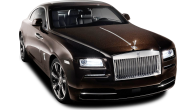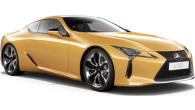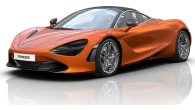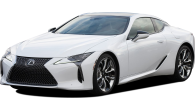Tim Robson road tests and reviews the 2016 Audi R8 V10 Plus, with specs fuel consumption and verdict at its Australian launch.
Finally, we drive the second generation Audi R8 on Australian roads, and it’s been worth the wait
Any day you get to drive a V10-powered supercar is a good one, and so far we’ve had a couple of days aboard Audi’s long-awaited replacement to its well known and fondly regarded R8 sports car.
The range-topper of the vast Audi fleet, and the fastest production car it has ever produced, the R8 was launched overseas late last year, and has made a couple of Aussie appearances at both Bathurst and Sydney Motorsport Park, albeit in left-hand-drive form.
This time, though, CarsGuide.com.au has piloted a pukka right-hooker around the sinuous, twisting terrain of the NSW Snowy Mountains aboard Audi’s $389,900 R8 V10 Plus, which is good for an astonishing 449kW at 8250rpm and 560Nm at 6500rpm from its naturally aspirated 5.2-litre V10 engine.
It’ll dispatch a 0-100km/h dash in just 3.2 seconds on its way to a top speed of 330km/h. It’s rated at 12.3 litres per 100km on fuel economy… suffice to say an afternoon spent near the redline will means numbers closer to 20l/100km and beyond.
It’ll also come in a more ‘sedate’ 397kW/540Nm version that will cost $354,900, but we’re told that more than 80 per cent of customers will plump for the full-fat version of what Audi is calling its ‘everyday supercar’.
The 397kW version will return 11.3 litres per 100km, and still knock off the 0-100km/h in an impressive 3.5 seconds. Its top speed of 320km/h is 10km/h down on its brother – kind of a moot point anyway…
For those who dismiss the R8’s new sharper lines as merely a corporate directive, wait until you see it up close; it still – as it should – has the ability to stop you in your tracks and take a breath.
Based around a 79 per cent aluminum and 13 per cent carbon fibre (well, technically it’s carbon fibre reinforced polymer, or CFRP) chassis, the R8 carries over its mid-engined, two seat configuration from the first generation car.
The all-new alloy V10, on display for all the world to see underneath a glass hatch cover, is a legacy of the company’s deep-rooted involvement in GT3 racing, combining genuine firepower with real-world civility and drivability. The non-turbo engine even has a cylinder-on-demand mode that shuts down its pair of five-cylinder banks at alternative intervals to save fuel while cruising.
It’s backed by the best seven-speed dual-clutch transmission Audi could concoct, with blink-and-you’ll-miss-it shift intervals, and it all comes together via an all-new quattro all-wheel-drive system that can send all the V10’s drive instantly to either end of the car in an infinitely variable state – no fixed front/rear axle ratios here.
Race car-derived double wishbones suspend the car on its 20-inch rims, while its carbon ceramic brakes are larger than those fitted to V8 Supercars.
It’s about 50kg lighter than the last V10 at an unladen 1,555kg, according to Audi, yet it’s almost twice as stiff through the chassis. Interestingly, the V10 version weighs 50kg more thanks to its steel brake set-up.
The Audi’s external visage is definitely one that improves with proximity. For those who dismiss the R8’s new sharper lines as merely a corporate directive, wait until you see it up close; it still – as it should – has the ability to stop you in your tracks and take a breath.
The side blades have been toned down, the grille area has been opened up and the rear end has been sharpened up. The new laser-light LED head lamps are definitely reminiscent of an high-spec A4, sure, but parked up on its 20s, small CFRP fixed spoiler (standard on the V10 Plus) in place, the R8 looks amazing.
Inside, it’s strictly a two-seater affair. You’ll need to pack light, as well, with only a small 112-litre front luggage compartment and limited spaces inside the cabin for stuff.
You can order a $650 ‘storage package’ which adds a storage net behind and between the two seats, but our advice is to pack light.
Same goes for items like bottles and coffee cups; a set-back centre console bin is included but has a very low sill, and will connect with the driver’s elbows when opened.
There’s a deep, useful storage compartment under the dash that can swallow the largest of phones, though.
As we settled in for an afternoon in the chilly but dry Snowies, a couple of issues immediately raise their heads, with the plasticky shift paddles behind the steering wheel the first surprising disappointment.
There aren’t that many places in a car that you interact so frequently with as the shift paddles in a high performance car, and stock items are, frankly, a crushing disappointment in a $400,000 machine; in fact, the shifters in a VW Golf GTI are stiffer, more positive and nicer to use.
The manually adjustable fixed-back bucket seats, too, are an odd mix of not-quite-right and underdone. They are narrow across the base and through the lumbar area, and while they’re low enough for my 185cm frame to fit below the roofline, taller people may have trouble finding an ideal position behind the wheel or in the passenger seat.
The all-digital dash is a terrific piece of kit, though our all-too brief blast through the Snowies didn’t allow us to navigate to a sweet spot in terms of the information on the display. With satellite navigation, car info, speed, tacho, infotainment and more on display, there’s a lot going on in the space, that’s for sure.
The three-spoke wheel is also plastered with controls, including a drive mode select dial and a start/stop button. Like the seats, it feels like an apologetic lean towards its race car roots that hasn’t quite come off.
Moving all the instruments to the dash and steering wheel has cleaned up the centre console area markedly, though, and the broad dash is unsullied by a tack-on screen. Climate control dials bring a little old-school back into the mix, while the multimedia dial resides behind the small T-shifter.
One thing to note; the R8’s shifter requires the push of an oddly placed ‘park’ button on its rear side, prompting several people to shift into ‘reverse’ in an attempt to find the parking position.
Driving
Pretty much everything is forgiven when you thumb the start button, though, and the big V10 instantly bursts into eager life. The Australian-spec V10 Plus is fitted with Audi’s sports exhaust as standard, and a button on the wheel allows you to open a valve in the rear muffler to release more decibels when required.
Unlike some of its rivals, it still feels entertaining to punt at half-pace or less.
A great car is the sum of its parts, and the R8 is a great car. Its chassis is absolutely vault-stiff, allowing the wheels to track intimately over all road surfaces and sending detailed messages back through your fingers and backside.
It’s so stiff, in fact, that the impact of the mighty V10 on your shoulder blades can feel disappointingly underdone – until you look at the speedometer, that is. The naturally aspirated urge from the dry-sumped 5.2-litre marvel is delivered in one relentless, massive, straight line of torque right around to its power peak of 8250rpm.
While its noise may sound muted to those who’ve heard either the Lamborghini Huracan or Jaguar F-Type R in full flight, rest assured that there is still plenty of aural acrobatics at play up the rev range.
The car’s 48/52 front-rear balance comes thanks to its mid-engined configuration, and it’s a sublime handler in all conditions. Its electromechanical steering is a shade too light underhand for my tastes, but it’s a joy to be able to place the front wheels exactly where you want them with so little effort.
Drive traction off the corners, too, is just brilliant, with the quattro system seamlessly and instantly delivering power where it’s needed most.
The carbon brakes have a softer feel underfoot than steel versions, but even after a prolonged session of hard use, they stood up fade free.
The R8’s suspension tune, too, is incredibly well executed. There is no multi-mode damper trickery at play here; the V10 Plus has just one setting on its shocks and springs, and it works perfectly everywhere.
A well-tuned chassis can have both ride and handling, and the R8 is a textbook example of having the best of both worlds.
The R8 is a very, very sophisticated road-going tool, with deep reserves of competency that encourage the skilled driver and flatter the part-timer. Unlike some of its rivals, it still feels entertaining to punt at half-pace or less.
Indeed, if you want to potter around at 60km/h, its silence and civility is a marvel to behold. There are exactly zero histrionics from the highly strung drivetrain, while the supple suspension tune works beautifully on broken terrain. Of course, the caveats of a low-slung, broad supercar in an urban environment come into play, with care required on steeper driveways and when maneuvering in tight spots.
Safety and servicing
It’s sold with a three-year, unlimited kilometre warranty, with suggested service intervals of 15,000km.
Safety-wise, it comes equipped with air bags for driver and front passenger, side air bags, seat-mounted and head-level curtain air bags. No radar cruise, autonomous emergency braking or lane departure warnings for the R8, though, with it having to make do with traction and stability control and electronic brake force distribution.
Audi R8 2016: 5.2 V10 Plus Quattro
| Engine Type | V10, 5.2L |
|---|---|
| Fuel Type | Premium Unleaded Petrol |
| Fuel Efficiency | 12.9L/100km (combined) |
| Seating | 2 |
| Price From | $165,550 - $190,300 |
Verdict
Audi is right; the new R8 is an everyday supercar. It might miss out on that last micro-percentage of eye-widening impact that truly special machines impart to the driver, and some of the interior treatment is less than perfect. As a flagship machine for the brand, though, the R8 can carry the mantle with pride.







.jpg)


















































.jpg)
.jpg)
_0.jpg)



